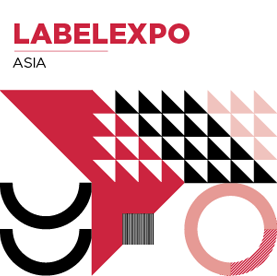In conversation with Maria Paula Murcia Sánchez
Click on image to download high resolution version
Maria Paula Murcia Sánchez, talent hunter & career advisor, is speaking at Label Summit Latin America 2024, and here, she gives us a preview of what she’ll be covering in her conference session at the two-day event.
Welcome Maria Paula, it’s great to have you join the Label Academy hosted Label Summit Latin America as speaker! Can you give us a taster of the sorts of companies you work with, and, without giving too much away, what you will be presenting in your session?
Thank you very much for the invitation! It’s a pleasure for me to take part in Label Summit Latin America 2024!
During the last 10 years I’ve been fortunate to work with companies and leaders from a range of sectors - both products and services - from multinationals to entrepreneurship. My answer seems very broad, but the reality is that all these companies have had something in common that is very important to me: they have or seek to have people / talent / collaborators as the center of their growth strategies, and within that they also consider HR as a core area within the organization.
The reality is that the way we relate to each other has changed and so have the dynamics of the Labor Market. We will talk about this during the session, how to understand the new dynamics of the Market, how to find and attract talent, Technology as an ally and the importance of properly understanding the type of profile I am looking for to meet today's challenges and those to come in my organization.
How big is the scale of the workforce challenge in Colombia, and the wider region? Where are the main skills gaps you’re witnessing, and why?
It is an important challenge; as I said before, the Market has changed and like all changes, it brings with it the need to adapt and explore the unknown. We are going from having people who were looking to have a career in the same company for 20+ years and obtain a pension, to people who are looking for a place to maximize their benefits aligned with work-life balance and flexibility, that is what they are looking for. Increasingly evident generational changes that still coexist in the Labor Market.
The gaps may vary depending on the industries, positions, values and characteristics of the companies, but I would like to highlight the following: Multigenerational and interdisciplinary leadership: leaders capable of creating effective work dynamics with the strengths of different generations and capable of working with people from backgrounds different from your own. Effective communication: even more evident and important since the Pandemic, where knowing how to transmit clear, concrete and actionable messages to your teams, now virtually too, has become a key skill.
To what extent are we seeing a step-change in the ways in which companies recruit, post-pandemic? How do you foresee this will evolve in the region over the next five years?
As a result of the Pandemic, companies were forced to learn to interview virtually, to have greater clarity in the required profile, to reevaluate the importance of “soft” skills when hiring and, in many cases, to rethink the structure of their teams. On top of that, talent globalized even further and faster, so in many cases, depending on the position, the competition for talent stopped being local and became global.
To achieve a competitive advantage and attract the talent they need, companies worked to strengthen their employer brand, develop new talent attraction and retention strategies, and better understand the profile of their collaborators and those they sought to attract. Social networks became an important source of recruitment that will continue to gain strength in the years to come.
Can you give some examples of how different industries are successfully tackling the workforce challenge head-on?
It is a reality that there is a shortage of talent. Today, companies compete not only to gain market share, but also for talent. Given this shortage and flight of talent to other markets (countries), several strategies have been developed, such as creating training and training programs to have a pool of possible candidates, approaching the Entrepreneurship ecosystem that has had a very important growth and impact in the region, a referral program for employees to refer candidates, and outsourcing of selection and recruitment processes, among others.
Some examples: Companies in the Hospitality industry (important development in the region and deep talent shortage) giving scholarships and creating training programs that translate into highly committed qualified talent. The Smile Restaurants group is an example of this. Mastercard LATAM has also partnered with companies in the sector.
A “traditional” European bank with a strong presence in LATAM, which made a strong commitment to generating value through Entrepreneurship programs to connect with the ecosystem and digital channels of Education “Let's Learn Together”. Yes, it is BBVA. Rated one of the best banks to work for by its current and former employees. It also connects with new generations. Hats off to them!
The Technology industry, mainly, encouraged referral programs because they understood that there is no better ambassador than the employees themselves. Sometimes it is paid for hired referrals, sometimes it is paid to the employee after their referral completes the trial period in the company. AWS an example of the first case.
How is digital technology changing the way in which companies operate, and recruit? What are the pros and cons?
The pandemic accelerated a change that was imminent: the introduction of technology in the selection processes. Finding at least one stage of the process in which we do not have contact with another human is increasingly common. 100% of the processes will be like this and there will be more and more stages with Technology involved that requires fewer man hours, mainly at the beginning of the process, which is the part that takes the most time.
In the coming years we will continue to see the development of Technology for Selection processes and other Human Resources processes. The imminent implementation in all companies of their own or outsourced ATS (Applicant Tracking Systems) (which have existed for several years) that optimize and reduce the operation time of the Recruitment teams, “delayed” interviews or with holograms, among others. many other changes.
Pros:
- Reach: possibility of reaching profiles that would otherwise be very difficult.
- Optimization: Reduction of operational hours of HR teams
- Strategy: HR areas that contribute to the business and are no longer solely operational
- Documentation: have a record of the processes that can be consulted at any time and become an important source of recruitment for future processes.
Cons, although I would rather say challenges because Technology in the Selection processes is here to stay:
- Competition: competition for talent stopped being exclusively local and, in many cases, became global
- Clarity: understand the job profiles not just as a wish list, but thinking about what the impact is to better understand the type of skills I should look for in candidates.
This is just to highlight a few.
What single piece of advice would you give to label and package printing companies in Latin America regarding recruitment?
Focus on your audience! Yes, as the Marketing team focuses on understanding who, where their client is and what their client is like, the HR team must define strategies to be present in the spaces where their target talent is located. Socialize best practices and pain points among HR teams of companies in the sector.
I would recommend talking to your current employees as a form of market research to find out the reasons why they work for the company: what they value, what they like, what opportunities for improvement. Current employees are a very valuable source of information to continue attracting this type of talent.
Being a highly technical industry, possibly one of the biggest pains is precisely finding technical personnel. Thinking about an academic program, like the example we talked about in the Hospitality sector, can be a good initiative that is also sustained over time. As a shock therapy, opening up to talent from other markets becomes an important option, whether from other countries or even from other industries that require “soft” skills and similar techniques. Therefore, again the importance of understanding very well the type of talent they seek to attract.
With nearshoring that LATAM takes due to its strategic position (mainly Mexico and Brazil), the shortage of technical talent became even more evident. I share this article from Bloomberg Mexico about this phenomenon: https://www.bloomberglinea.com/latinoamerica/mexico/nearshoring-se-topa-con-el-deficit-de-talento-tecnico-en-america-latina/
If you have specific cases that you want to share with me, I would love to know more and perhaps discuss them during the Summit. You can write to me at talent@mariapaulamurcia.com.
What are you most looking forward to seeing at Label Summit Latin America 2024?
Leaders open to connecting, sharing best practices and pain points. I hope to find a space for learning and inspiration among industry players in the region. May this be a very beneficial space for everyone, full of opportunities and expansion.
I hope that in 2024 you achieve the goals set for you as leaders and your teams! May the challenges of the Market be a motivation to think outside the box and reach the objectives.
See you in March!
See Maria Paula present “Upskilling to adapt to new talent challenges in the market” from 11.00 – 11.30am on 13 March 2024. For the full program, visit https://www.labelsummit.com/colombia/conference-program.






